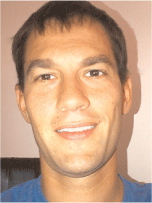Measure twice, cut once: determining Roseneath Epsilon Murteree (REM) shale gas potential with point-source, point-receiver full-azimuth acquisition
Anastasia Poole A , Jennifer Badry A , Gabriele Busanello A , Brendon Mitchell B and David Schmidt BA Schlumberger WesternGeco.
B Drillsearch.
The APPEA Journal 53(2) 453-453 https://doi.org/10.1071/AJ12064
Published: 2013
Abstract
The key to the successful exploitation of shale resources, such as the REM shale gas interval in Queensland, is to obtain maximum reservoir contact by efficient drilling and hydraulic fracturing. This can be achieved by identifying areas of the reservoir already naturally fractured or where minimum effort is required for stimulation. Detection of these so-called sweet spots can be crucial for efficient reservoir development.
Seismic methods can be used in shale gas reservoir characterisation studies to achieve an improved understanding of the structure, heterogeneity, and geotechnical stress regime of the reservoir and related containment, leading to identification of the desired production sweet spots and optimum placement of future wells.
To achieve this, much more stringent requirements are placed on the quality and characteristics of seismic data than would be needed for a purely structural image.
Innovative best-practice solutions based on experience in the basin and elsewhere were included in the survey design of the Winnie 3D seismic acquisition. The survey featured broadband acquisition with point-source vibroseis and point-receiver accelerometers. Omnidirectional and symmetrical dense sampling with appropriately long offsets provided uniform azimuthal coverage with extremely high trace density. The high-specification acquisition design was complemented with latest non-uniform noise attenuation to enable a fast-track interpretation, detection of velocity anomalies, pre-stack seismic inversion, and the extraction of seismic attributes in advanced stages of data processing.

Anastasia Poole is area geophysicist for WesternGeco Schlumberger. She has large exposure to various projects ranging, from land seismic and non-seismic 2D and 3D survey evaluation and design and planning to OBC data processing. She has more than 10 years’ experience of work in Russia, the Middle East, and Australia. |

Jennifer Badry works in WesternGeco Perth office as leader of the unconventional data processing project. She moved to Australia to work in the land data processing team as she has experience processing land 2D, 3D, 4D, and 3C datasets in North America. Her present interests include near surface characterisation, particularly using surface waves techniques. |

Gabrielle Busanello leads the land data-processing group for WsternGeco Schlumberger. He has large exposure to various projects ranging from land 2D and 3D to marine, OBC, and TZ data processing. His present interests are near surface characterisation using different geophysical measurements and their integration for seismic imaging. |

Brendon Mitchell is geophysicist at Drillsearch Energy Limited. His main area of interest is Cooper/Eromanga Basin in southwest Queensland and SA. His past experience includes work for Central Petroleum and WesternGeco with exposure to various projects, including time and depth-data processing. |

Dave has more than 30 years of experience as a petroleum geophysicist and has worked in basin evaluation, play assessment, prospect generation, field appraisal and development, and geophysical operations. He has held various technical positions and has extensive experience in Australian basins (Gippsland, Bass, Otway, Perth, Carnarvon—Barrow/Dampier, Browse, Bonaparte) and overseas basins (New Zealand, PNG, South China Sea/Vietnam, India, Yemen, Angola). |


